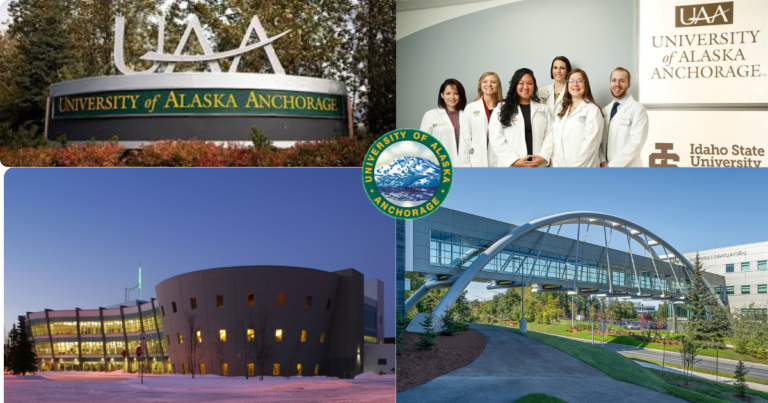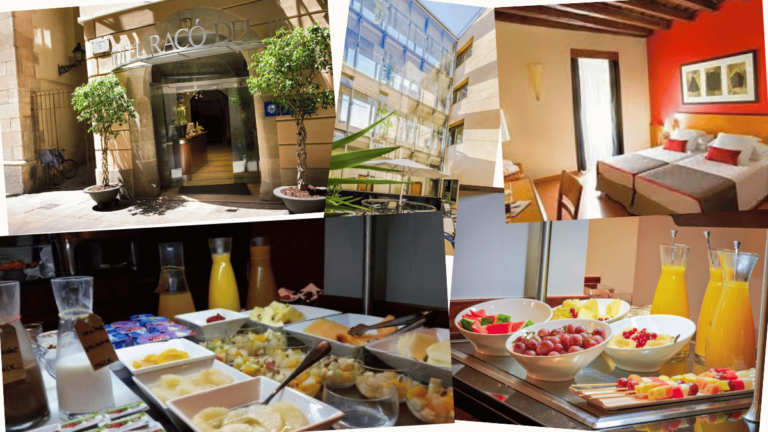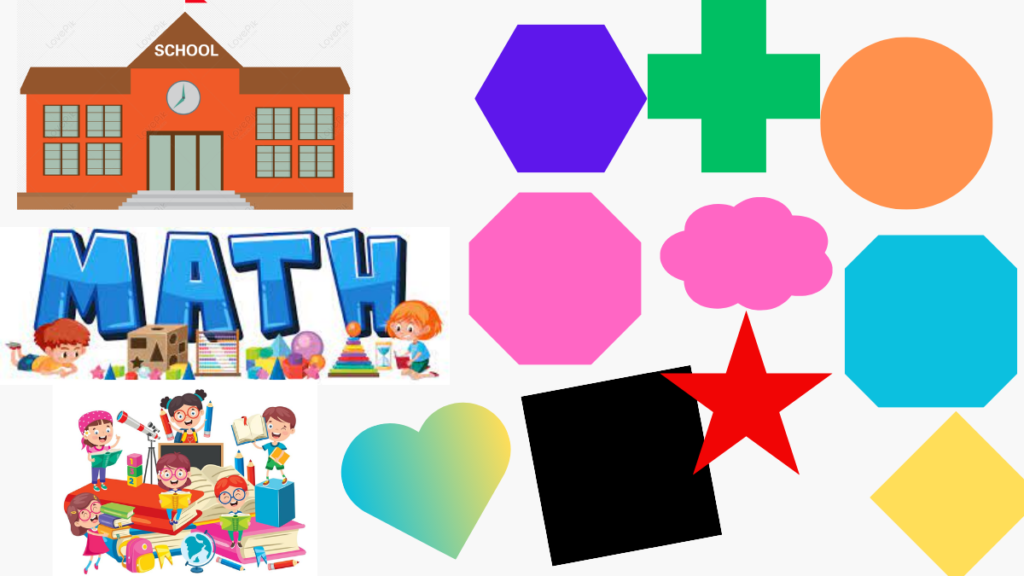
shapes in Spanish
Shapes are an essential part of our daily lives. We encounter them everywhere, from the objects around us to the natural world. In this article, we will explore the various shapes in Spanish and delve into their names, characteristics, and practical usage. Whether you’re learning Spanish or simply curious about expanding your knowledge, understanding the names of shapes in another language can be both educational and fun. So, let’s dive in and explore the fascinating world of shapes in Spanish!
Shapes are universal and cross cultural boundaries. They are a fundamental part of communication and can help us describe and identify objects. Learning the names of shapes in Spanish not only enhances your language skills but also allows you to describe the world around you in a more precise manner. Let’s explore some common shapes and their names in Spanish.
Circle (Círculo)
The circle is one of the simplest and most common shapes. In Spanish, it is called “círculo.” A circle is a perfectly round shape with all points equidistant from its center. It represents unity, infinity, and harmony.
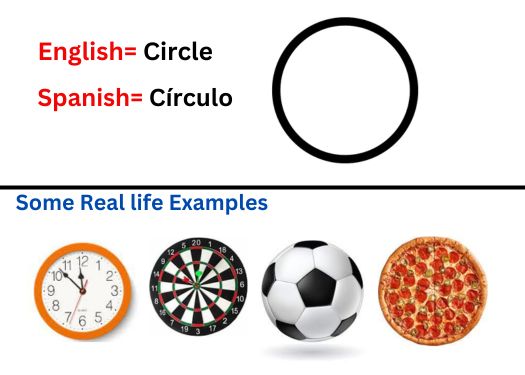
Square (Cuadrado)
A square, or “cuadrado” in Spanish, is a four-sided polygon with equal sides and right angles. It is a versatile shape used in architecture, design, and everyday objects. Squares symbolize stability, balance, and order.
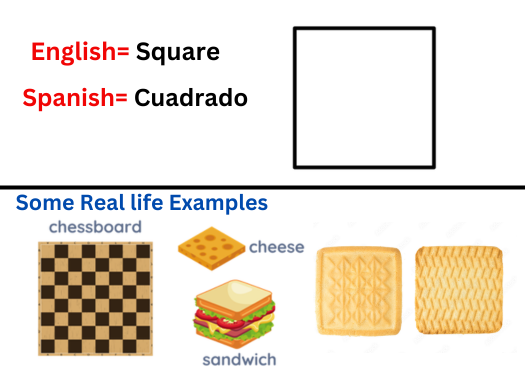
Triangle (Triángulo)
A triangle, known as “triángulo” in Spanish, has three sides and three angles. It is a fundamental shape in geometry and is widely used in construction and engineering. Triangles represent strength, change, and progression.
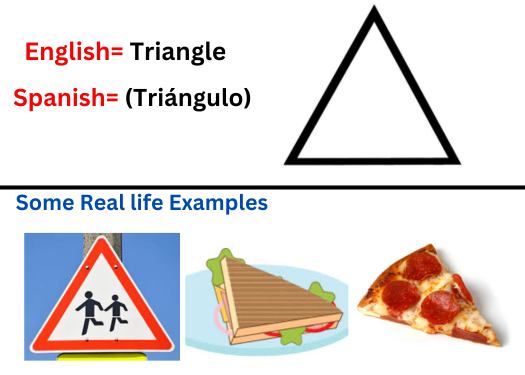
Rectangle (Rectángulo)
The rectangle, or “rectángulo” in Spanish, is a four-sided shape with opposite sides of equal length and four right angles. It is commonly found in buildings, books, and electronic devices. Rectangles symbolize organization, efficiency, and structure.
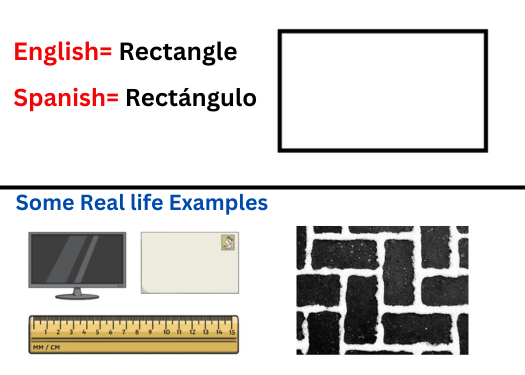
Oval (Óvalo)
The oval shape, called “óvalo” in Spanish, is similar to a stretched circle. It has rounded ends and is used in various contexts, such as art, jewelry, and sports. Ovals represent uniqueness, elegance, and movement.
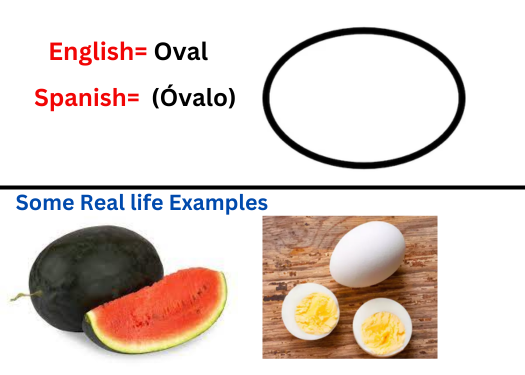
Pentagon (Pentágono)
A pentagon, or “pentágono” in Spanish, is a polygon with five sides and five angles. It is often associated with governmental and military symbols. Pentagons symbolize power, authority, and defense.
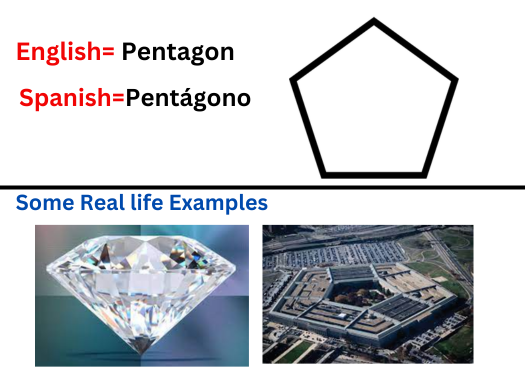
Hexagon (Hexágono)
A hexagon, known as “hexágono” in Spanish, is a six-sided polygon. It is a popular shape in nature, found in beehives, snowflakes, and crystals. Hexagons symbolize harmony, balance, and efficiency.
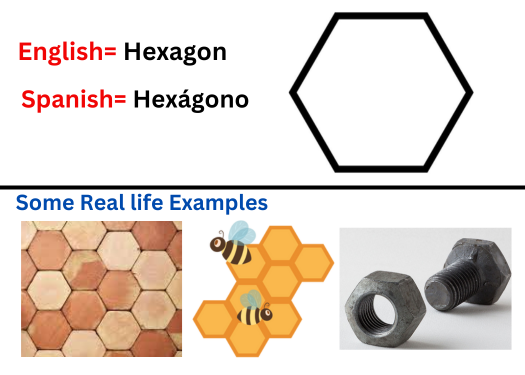
Octagon (Octágono)
An octagon, or “octágono” in Spanish, is an eight-sided polygon. Stop signs and certain building structures commonly feature it in architecture. Octagons symbolize strength, stability, and protection.

Star (Estrella) Shapes in Spanish
In Spanish, the star, known as “estrella,” forms by connecting multiple line segments. People often associate it with astronomy, celebrations, and symbols of good luck. Stars symbolize guidance, inspiration, and aspiration.
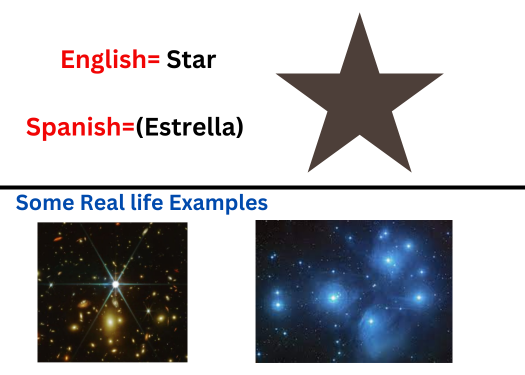
Heart (Corazón)
The heart shape, known as “corazón” in Spanish, represents love, affection, and emotions. It is a universal symbol of compassion and romance. Hearts are commonly used in art, cards, and decorations.
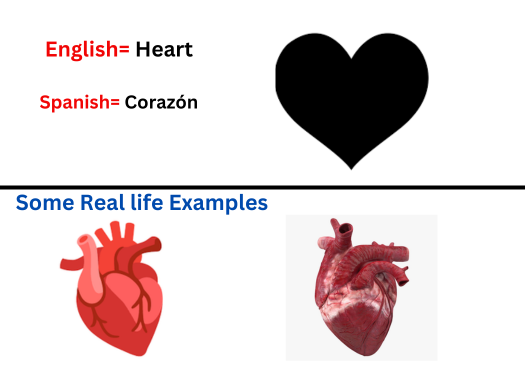
Diamond (Diamante)
The diamond shape, or “diamante” in Spanish, is a four-sided figure with two pairs of parallel sides. It is a precious gemstone and also a popular shape in jewelry and design. Diamonds symbolize strength, endurance, and luxury.
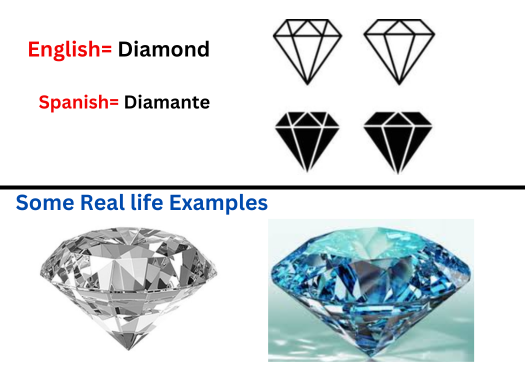
Sphere (Esfera)
A sphere called “esfera” in Spanish, is a three-dimensional shape that is perfectly round and symmetrical. It is found in nature, such as planets and balls, and represents wholeness, unity, and perfection.
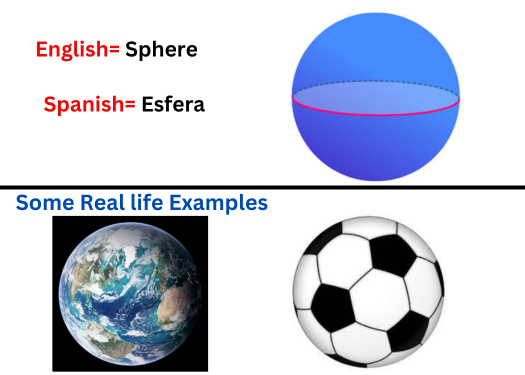
Cylinder (Cilindro)
The cylinder, known as “Cilindro” in Spanish, is a three-dimensional shape with two circular bases and a curved surface. It is commonly used in engineering, plumbing, and containers. Cylinders symbolize efficiency, storage, and versatility.

More common Shapes in Spanish
Rhombus (Shapes in Spanish= Rombo)
Description: A quadrilateral with four sides of equal length, but its angles are not right angles.

Trapezoid (Shapes in Spanish=Trapecio)
Description: A quadrilateral with only one pair of parallel sides, called bases, and the other two sides are not parallel.
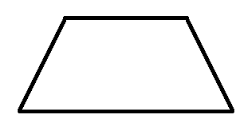
Cone (Spanish name=Cono)
Description: A three-dimensional shape with a circular base that narrows to a point called the apex or vertex.
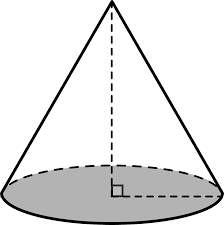
Cuboid (Spanish name=Paralelepípedo)
Description: A three-dimensional shape with six rectangular faces, where each face is parallel to its opposite face.

Crescent (Spanish name=Media Luna)
Description: A curved shape resembling a segment of a circle, with a rounded edge and tapering ends.

Arrow (Spanish name=Flecha)
Description: A straight shape with a pointed end, representing direction or movement.
Cross (Spanish name=Cruz)
Description: A shape formed by two lines intersecting at right angles, often associated with religious or symbolic significance.

Spiral (Spanish name=Espiral)
Description: A shape that curves around a central point, continuously expanding or contracting in a circular pattern.
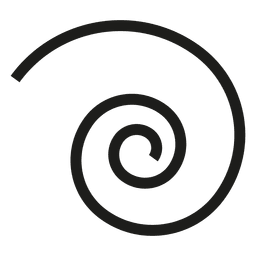
Arrowhead (Spanish name=Punta de Flecha)
Description: The pointed end of an arrow, is usually triangular or wedge-shaped.
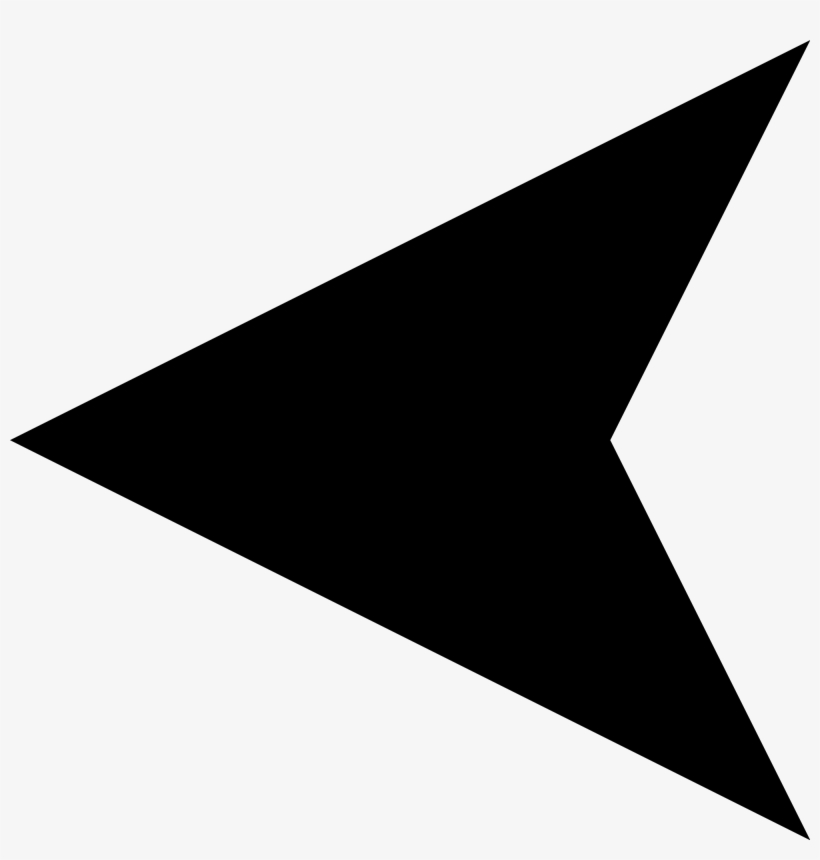
Download Shapes Worksheet in PDF
Click ==>>HERE to Download
Properties of 2D 3D Shapes
To Download Properties file in pdf Click ==>>HERE
Amazing Facts About Shapes in Spanish
- Circle
- The Most Symmetrical Shape
- Abundance in Nature
- Golden Ratio
- Divine Proportion
- Representation of Beauty and Harmony
- Fractals
- Intricate Self-Similarity
- Patterns Repeating at Different Scales
- Pyramids
- Triangular Structures
- Mathematical Precision and Architectural Grandeur
- Möbius Strip
- Non-Orientable Surface
- One Side and One Edge
- Platonic Solids
- Five Regular Polyhedra
- Mathematical Elegance and Significance
- Spheres in Architecture
- Strength and Aesthetics
- Geodesic Domes and Efficient Structures
- Fibonacci Spiral
- Logarithmic Spiral
- Observations in Nature and Galaxies
- Symmetry in Nature
- Natural Shapes with Remarkable Symmetry
- Honeycombs, Butterfly Wings, and Snowflakes
- Tessellations
- Repeating Patterns without Gaps or Overlaps
- Art, Tiling, and Natural Patterns
Conclusion on Shapes in Spanish
Shapes play a crucial role in our understanding and communication of the world. Learning the names and characteristics of shapes in Spanish not only expands our language skills but also deepens our cultural knowledge. From circles and squares to triangles and stars, each shape has its unique significance and purpose. So, embrace the diverse world of shapes in Spanish and let them inspire your creativity and expression.
FAQs about Shapes in Spanish
1. How can I practice learning shapes in Spanish?
To practice learning shapes in Spanish, you can create flashcards with the names of shapes and their corresponding images. You can also use online language learning resources and apps that offer interactive exercises and quizzes.
2. Can I use these shape names in everyday conversations?
Absolutely! Knowing the names of shapes in Spanish can be useful when describing objects, giving directions, or discussing designs. Incorporating these terms into your vocabulary will enhance your ability to communicate effectively.
3. Are the shapes mentioned in this article commonly used in Spanish-speaking countries?
Spanish-speaking countries commonly use and recognize the shapes mentioned in this article. However, it’s worth noting that regional variations and dialects may exist, leading to slight differences in shape names.
4. Are there any cultural significances associated with specific shapes in Spanish-speaking countries?
Yes, certain shapes may hold cultural significance in different Spanish-speaking countries. For example, the “Calaveras” (skull-shaped figures) are associated with the Day of the Dead celebration in Mexico. Exploring the cultural contexts of shapes can provide fascinating insights into the local customs and traditions.
